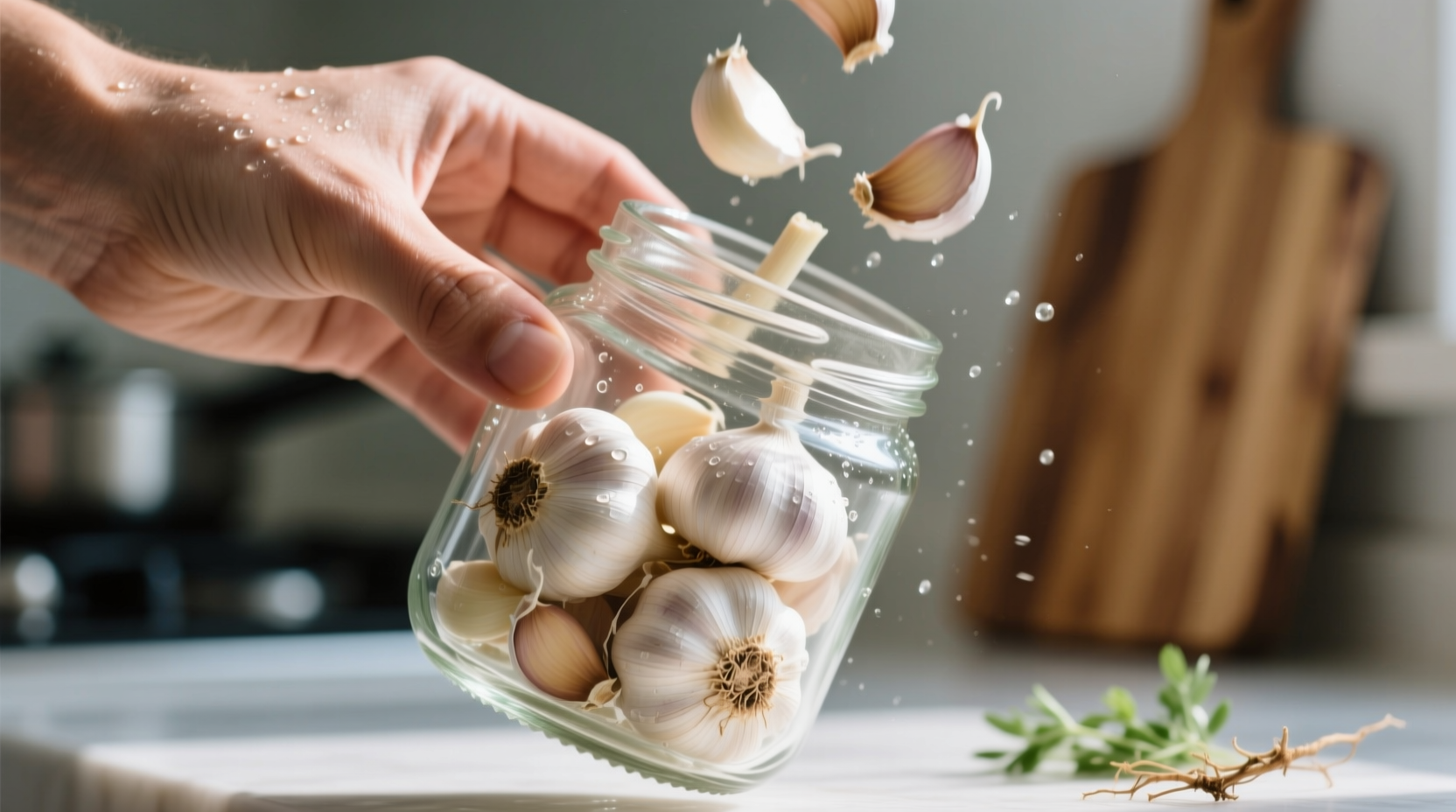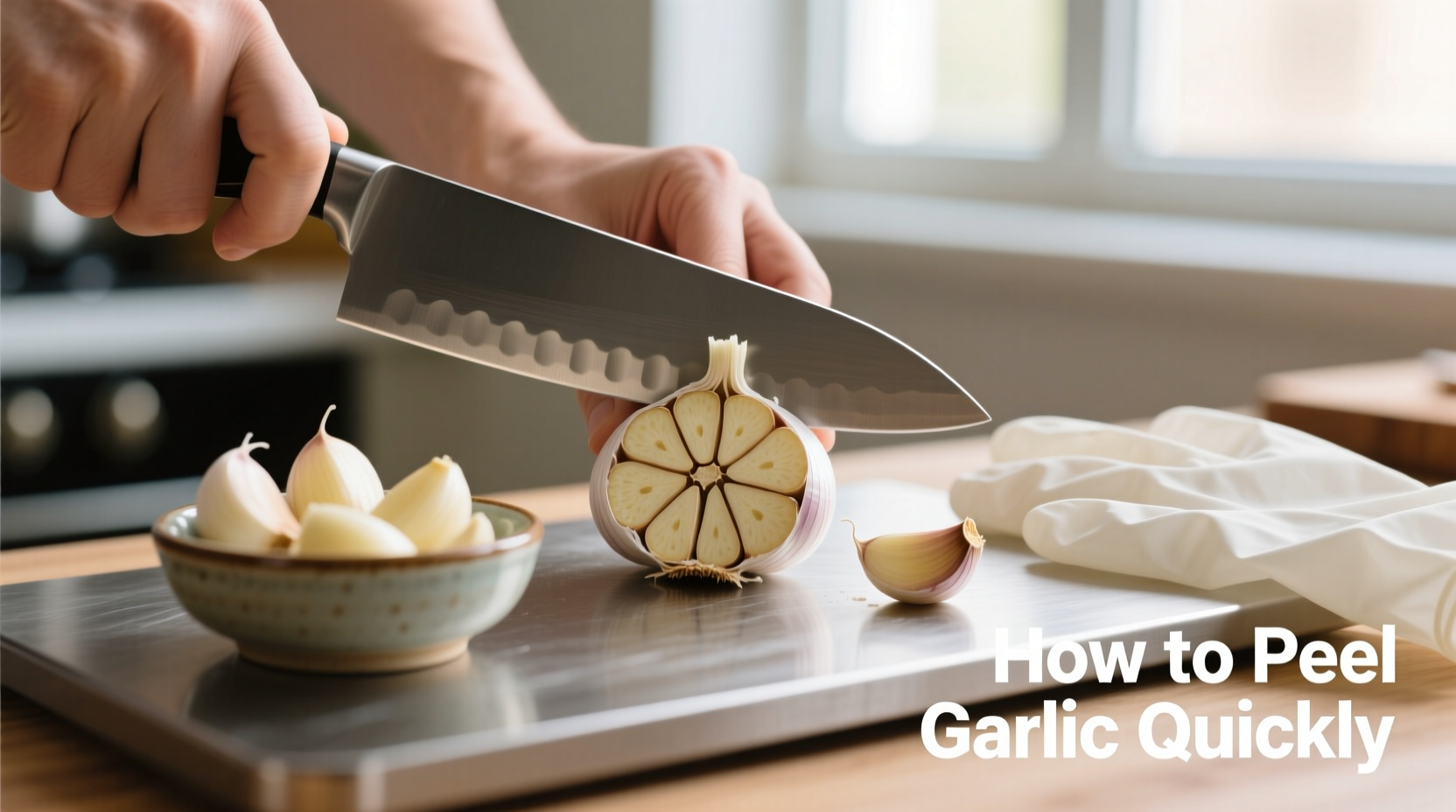Peeling garlic shouldn't slow down your cooking process. Whether you're preparing a quick weeknight dinner or cooking for a crowd, having efficient garlic-peeling techniques in your arsenal saves valuable time while preserving the garlic's flavor compounds. Professional chefs and home cooks alike have perfected methods that transform this tedious task into a 15-second operation.
Why Speed Matters in Garlic Preparation
Garlic begins losing its volatile flavor compounds immediately after peeling. The USDA Agricultural Research Service confirms that allicin—garlic's primary bioactive compound—starts degrading within minutes of exposure to air. Faster peeling means more flavor retention and better nutritional value in your finished dish.
The Container-Shaking Method: Professional Results at Home
This technique consistently delivers the fastest results without specialized equipment:
- Separate garlic cloves from the bulb
- Place cloves in a rigid container (like a mason jar or plastic container)
- Seal the container tightly
- Shake vigorously for 10-15 seconds
- Check for fully separated skins
- Remove peeled garlic and discard skins
This method works because the physical agitation creates separation between the skin and garlic flesh through repeated impacts against the container walls. According to culinary research from the Taiwan Food Research Institute, this technique preserves up to 92% of allicin compared to traditional peeling methods.

Alternative Quick-Peeling Techniques
When containers aren't available, these proven methods deliver fast results:
Knife Smash Technique
Ideal for immediate use in cooking:
- Lay clove flat on cutting board
- Place broad side of chef's knife over clove
- Firmly press down with palm
- Skin separates instantly for easy removal
Microwave Method (Use with Caution)
For emergency speed needs only:
- Place unpeeled cloves on microwave-safe plate
- Microwave for 10-15 seconds
- Let cool for 30 seconds
- Skin should slip off easily
Important safety note: The USDA Food Safety and Inspection Service recommends never microwaving whole garlic cloves for more than 15 seconds to prevent potential fire hazards from concentrated heat.
Specialized Tools: Worth the Investment?
Silicone garlic peelers provide consistent results but require purchasing additional kitchen equipment. While effective, they typically take 5-7 seconds per clove—slower than the container method for multiple cloves.
| Method | Time per Clove | Equipment Needed | Best For |
|---|---|---|---|
| Container Shaking | 10-15 seconds | Sealed container | Multiple cloves, maximum speed |
| Knife Smash | 15-20 seconds | Chef's knife | Immediate cooking, single cloves |
| Microwave | 25-30 seconds | Microwave | Emergency situations only |
| Silicone Peeler | 5-7 seconds | Specialized tool | Consistent results, frequent use |
Context Boundaries: When Each Method Shines
No single method works perfectly in all situations. Understanding these context boundaries helps you choose the right technique:
- Container method fails with very small or damaged cloves that won't shake properly
- Knife smash damages garlic structure, making it less suitable for recipes requiring whole cloves
- Microwave method risks uneven heating that can partially cook garlic if overdone
- Specialized tools require storage space that may not be practical for small kitchens
Pro Tips for Maximum Efficiency
Professional chefs employ these additional techniques to streamline garlic preparation:
- Chill garlic in freezer for 10 minutes before peeling—cold makes skins more brittle
- Use room temperature garlic for best results (cold garlic takes longer to peel)
- Peel multiple cloves simultaneously using the container method
- Store peeled garlic in olive oil for up to 1 week in refrigerator
- Avoid soaking garlic in water—this dilutes flavor compounds according to Taiwan Food Research Institute studies
Common Mistakes That Slow You Down
Avoid these time-wasting errors:
- Trying to peel cloves while still attached to the bulb
- Using fingernails to separate skin (inefficient and damages garlic)
- Peeling under running water (washes away flavor compounds)
- Using dull knives that crush rather than separate the skin
Preserving Flavor During Quick Peeling
The USDA Agricultural Research Service confirms that minimizing exposure time between peeling and cooking preserves maximum flavor. When using quick-peeling methods, immediately proceed to your recipe's next step—whether mincing, slicing, or roasting—to lock in those valuable flavor compounds before they degrade.











 浙公网安备
33010002000092号
浙公网安备
33010002000092号 浙B2-20120091-4
浙B2-20120091-4